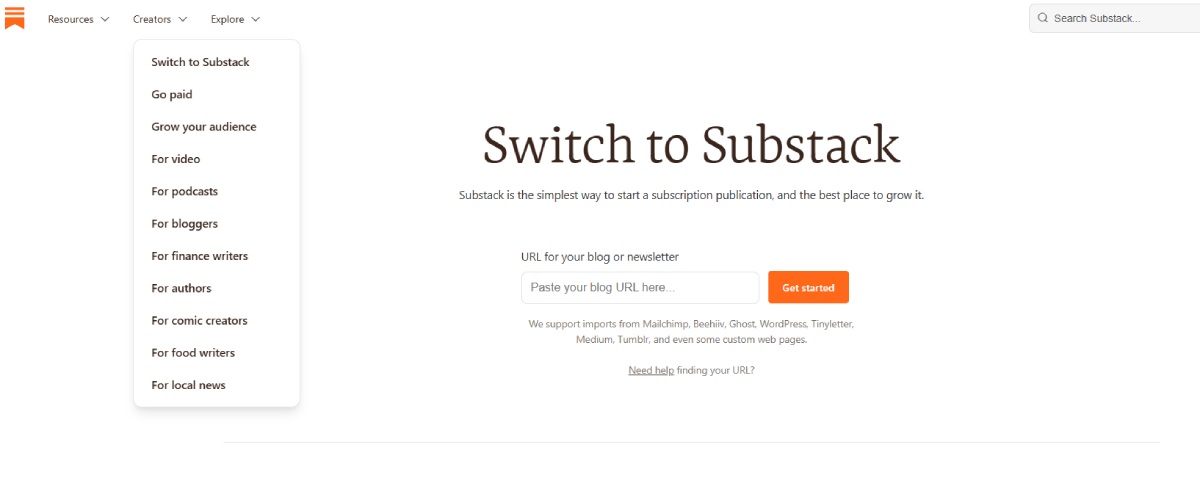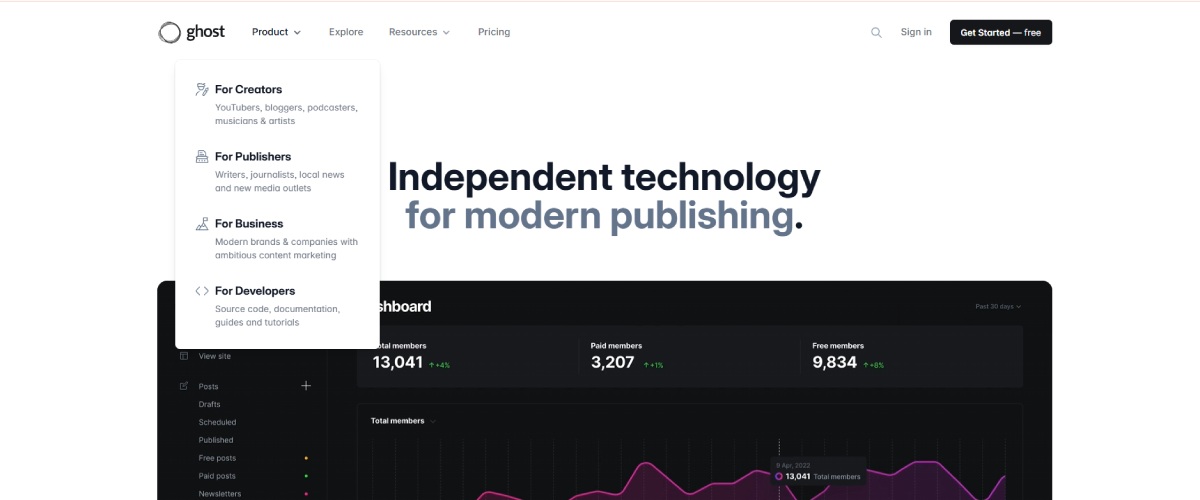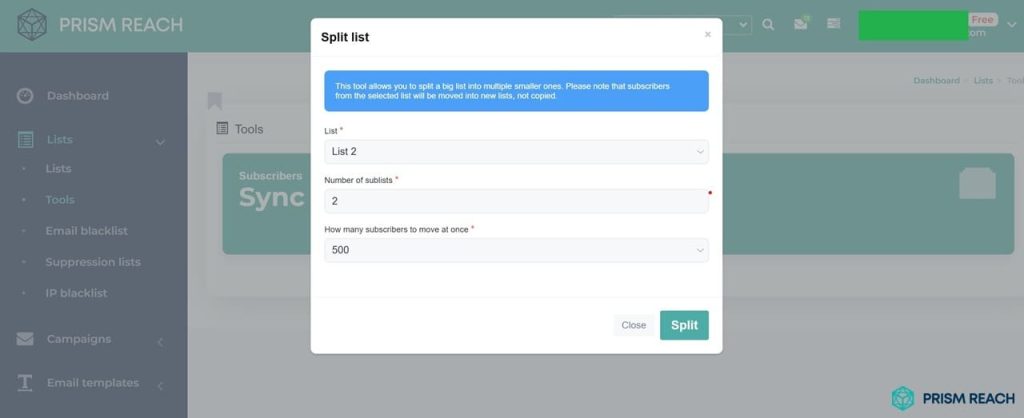Email marketing and content creation are pivotal in building and maintaining a loyal audience. Selecting the right platform can significantly impact your ability to engage with readers, monetize your content, and grow your brand. Substack and Ghost are two leading platforms that cater to different needs and preferences of content creators. While Substack is renowned for its user-friendly interface and built-in monetization features, Ghost stands out with its extensive customization options and open-source flexibility.
Beyond their standard features, both platforms harbor “hidden gems”—strategies and functionalities that are not widely recognized but can significantly enhance your marketing automation and audience engagement efforts. By leveraging these hidden gems, you can gain a competitive edge, ensuring your content stands out in a crowded digital landscape. Furthermore, integrating Prism Reach, an AI-powered SaaS solution, can provide advanced personalization and automation capabilities, complementing the strengths of both Substack and Ghost.
Key Facts
Understanding the fundamental differences between Substack and Ghost is essential before diving into advanced strategies. Here’s a snapshot comparison:
- Target Audience: Substack is ideal for writers and journalists seeking a straightforward platform to monetize newsletters. Ghost appeals to tech-savvy creators and businesses looking for extensive customization and control over their content.
- Features: Substack offers a user-friendly interface with built-in monetization through paid subscriptions. Ghost provides advanced SEO tools, extensive theme customization, and the ability to host multiple membership tiers.
- Pricing: Substack operates on a revenue-sharing model, taking a 10% cut of subscription earnings. Ghost offers both hosted plans starting at $9/month and a self-hosted option, allowing for more control over costs and features.
Both platforms support paid subscriptions, enabling creators to monetize their content effectively. However, their distinct feature sets and pricing structures make them suitable for different types of creators and business models.
Comparative Analysis: Substack vs Ghost
Substack and Ghost adopt fundamentally different approaches to email marketing and content creation, each excelling in their respective domains. Understanding these differences is key to leveraging their full potential.
Substack: Streamlined Publishing for Content-Focused Creators
Substack’s strength lies in its newsletter-centric design, making it ideal for writers who want to focus solely on their content without worrying about technical details. Its strengths include:
- User-Friendly Interface: Substack offers an intuitive, easy-to-navigate platform that allows creators to start publishing quickly without extensive technical knowledge.
- Built-In Monetization: The platform’s built-in subscription model enables creators to monetize their newsletters effortlessly by offering free and paid tiers.
- Community Features: Substack’s community features allow creators to connect with other writers and their audiences, increasing visibility and attracting new subscribers through word-of-mouth.
- SEO and Discoverability: Substack provides basic SEO tools and a built-in network that helps new creators gain visibility through recommendations within the ecosystem.
- Integrated Call-to-Action (CTA) Buttons: The ability to add multiple CTA buttons throughout posts encourages readers to take action at various points, boosting engagement and conversions.
Ghost: Versatile Platform for Tech-Savvy Content Entrepreneurs
Ghost shines in its versatility and customization, offering a more comprehensive toolkit for those willing to invest time in setup and personalization. Its key strengths include:
- Advanced Customization: Ghost provides extensive customization options with a wide range of themes and the ability to modify code, allowing for a unique and tailored website design.
- Open-Source Flexibility: Being open-source, Ghost offers full control over your content and data, making it an attractive option for creators who value ownership and flexibility.
- Multi-Tier Memberships: Ghost supports multiple membership tiers, enabling creators to offer different levels of access and exclusive content to subscribers.
- Robust SEO Tools: Advanced SEO features help creators optimize their content for search engines, enhancing discoverability and organic traffic.
- Extensive Integrations: Ghost integrates seamlessly with various tools and platforms, including Zapier, Stripe, and Mailgun, facilitating the creation of complex marketing and CRM workflows.


Integrating Hidden Gems: Strategies to Enhance Email Marketing and Content Creation
Both Substack and Ghost offer standard functionalities, but unlocking their hidden gems can significantly boost your marketing automation and audience engagement performance. Here are five strategies that can transform your campaigns:
1. Leverage Substack’s Community Features
Potential Effectiveness: High
Level of Obscurity: Moderate
Ease of Implementation: Easy
Uniqueness: Unique
Utilize Substack’s built-in community features to connect with other creators and their audiences. By engaging with other writers, sharing recommendations, and restacking their content, you can increase your visibility and attract new subscribers through word-of-mouth.
2. Implement Call-to-Action Buttons in Substack
Potential Effectiveness: High
Level of Obscurity: Moderate
Ease of Implementation: Easy
Uniqueness: Unique
Take advantage of Substack’s ability to add multiple call-to-action (CTA) buttons throughout your posts. This encourages readers to take action at various points in your content, such as subscribing, sharing, or visiting your website, increasing engagement and conversions.
3. Use Ghost’s Custom Themes
Potential Effectiveness: High
Level of Obscurity: Moderate
Ease of Implementation: Moderate
Uniqueness: Unique
Explore the marketplace for custom themes in Ghost to enhance your site’s design. A visually appealing site can improve user experience and retention, making it easier for visitors to navigate your content and engage with your newsletters.
4. Create a Content Calendar for Consistency
Potential Effectiveness: High
Level of Obscurity: Low
Ease of Implementation: Easy
Uniqueness: Common but effective
Establish a content calendar for both Substack and Ghost to maintain consistency in publishing. Regularly scheduled posts help build audience expectations and improve retention rates, ensuring that your subscribers remain engaged and look forward to your content.
5. Utilize Email Segmentation in Ghost
Potential Effectiveness: High
Level of Obscurity: High
Ease of Implementation: Moderate
Uniqueness: Unique
Ghost allows you to segment your email lists based on subscriber behavior or preferences. This enables you to send targeted content that resonates more with specific groups, increasing engagement and conversion rates.

Prism Reach: Enhancing Marketing Automation and Content Personalization with AI
While Substack and Ghost offer robust solutions for content creation and email marketing, Prism Reach introduces a new dimension with its AI-powered personalization capabilities. Designed to bridge the gap between comprehensive marketing features and advanced personalization, Prism Reach provides deep customization that can enhance any marketing strategy.
Key Benefits of Prism Reach
- Increased Engagement: Publishers report up to 40% higher engagement rates due to the personalized nature of the content.
- Higher Revenue: Tailored advertising and efficient content targeting lead to higher monetization rates for published newsletters.
- Improved Productivity: Automation and AI-driven insights significantly reduce the time required to create and manage campaigns.
Integrating Prism Reach with Substack and Ghost
Prism Reach can complement both Substack and Ghost by adding advanced personalization and AI-driven insights to your marketing automation efforts. Whether you’re looking to enhance your segmentation capabilities in Ghost or leverage Substack’s community features, Prism Reach offers tools that can elevate your campaigns.
For instance, using Prism Reach’s AI-powered scheduling can optimize send times based on subscriber behavior, ensuring your emails reach recipients when they’re most likely to engage. Additionally, Prism Reach’s dynamic content selection can automatically tailor newsletter content to individual subscriber preferences, enhancing relevance and engagement.
Upgrade Your Email Marketing with AI Personalization!
Practical Tips for Maximizing Email Marketing and Content Creation
To fully leverage the capabilities of Substack, Ghost, and Prism Reach, consider the following practical tips:
- Combine Community Engagement with AI Personalization: Use Substack’s community features to build connections and Prism Reach’s AI to personalize content, enhancing both engagement and retention.
- Implement Dynamic Content and Multiple CTAs: Utilize Ghost’s custom themes and Substack’s CTA buttons alongside Prism Reach’s dynamic content to create visually appealing and action-driven newsletters.
- Segment Your Audience and Optimize Send Times: Leverage Ghost’s email segmentation and Prism Reach’s AI-powered scheduling to send targeted content at the most effective times, maximizing open and click-through rates.
Choosing the Right Platform for Your Needs
The decision between Substack and Ghost hinges on your specific requirements and marketing goals. Here’s a breakdown to guide your choice:
When to Choose Substack
- User-Friendly Interface: If you prioritize ease of use and quick adoption, Substack’s intuitive interface is a significant advantage.
- Built-In Monetization: Substack’s straightforward subscription model is ideal for writers looking to monetize their newsletters without complex setup.
- Community Engagement: Leverage Substack’s community features to connect with other creators and grow your subscriber base through mutual recommendations.
When to Choose Ghost
- Advanced Customization: If your business requires highly customizable content and design options, Ghost’s extensive theme marketplace and open-source flexibility make it the superior choice.
- SEO and Discoverability: For creators focused on optimizing their content for search engines, Ghost offers robust SEO tools and comprehensive integrations.
- Multi-Tier Memberships: Ghost’s ability to support multiple membership tiers allows for diversified revenue streams and exclusive content offerings.

Enhancing Your Strategy with Prism Reach
Regardless of whether you choose Substack or Ghost, integrating Prism Reach can significantly enhance your marketing automation and content personalization strategy. Here are three specific benefits of Prism Reach that are relevant to this comparison:
- Deep Personalization: Prism Reach’s AI-powered user avatars and personalized introductions ensure each subscriber receives content tailored to their preferences, bridging the gap between Substack’s community features and Ghost’s advanced customization.
- Optimized Send Times: Using predictive analytics, Prism Reach identifies the best times to send newsletters, maximizing open and engagement rates across both platforms.
- Seamless Integration: Prism Reach can be easily integrated with both Substack and Ghost, enhancing their native capabilities without disrupting existing workflows, allowing for a more unified and efficient marketing strategy.
Conclusion
The choice between Substack and Ghost ultimately depends on the specific needs, resources, and goals of each creator or organization. Substack offers unparalleled ease of entry and a built-in network, making it an excellent choice for writers looking to quickly launch and grow their newsletters. Ghost, with its extensive customization options and more favorable long-term pricing, appeals to creators who prioritize control and scalability.
However, the emergence of innovative tools like Prism Reach highlights the evolving nature of email marketing automation and content personalization. By incorporating AI-powered personalization and deep engagement strategies, Prism Reach offers a compelling alternative that bridges the gap between Substack’s community-focused approach and Ghost’s customization prowess. Whether you choose Substack, Ghost, or integrate Prism Reach, the key is to align your choice with your specific marketing goals, technical expertise, and the unique needs of your audience.
Ultimately, leveraging the hidden gems within these platforms and integrating advanced tools like Prism Reach can transform your marketing automation and content creation efforts, leading to higher engagement, increased revenue, and a more loyal subscriber base.